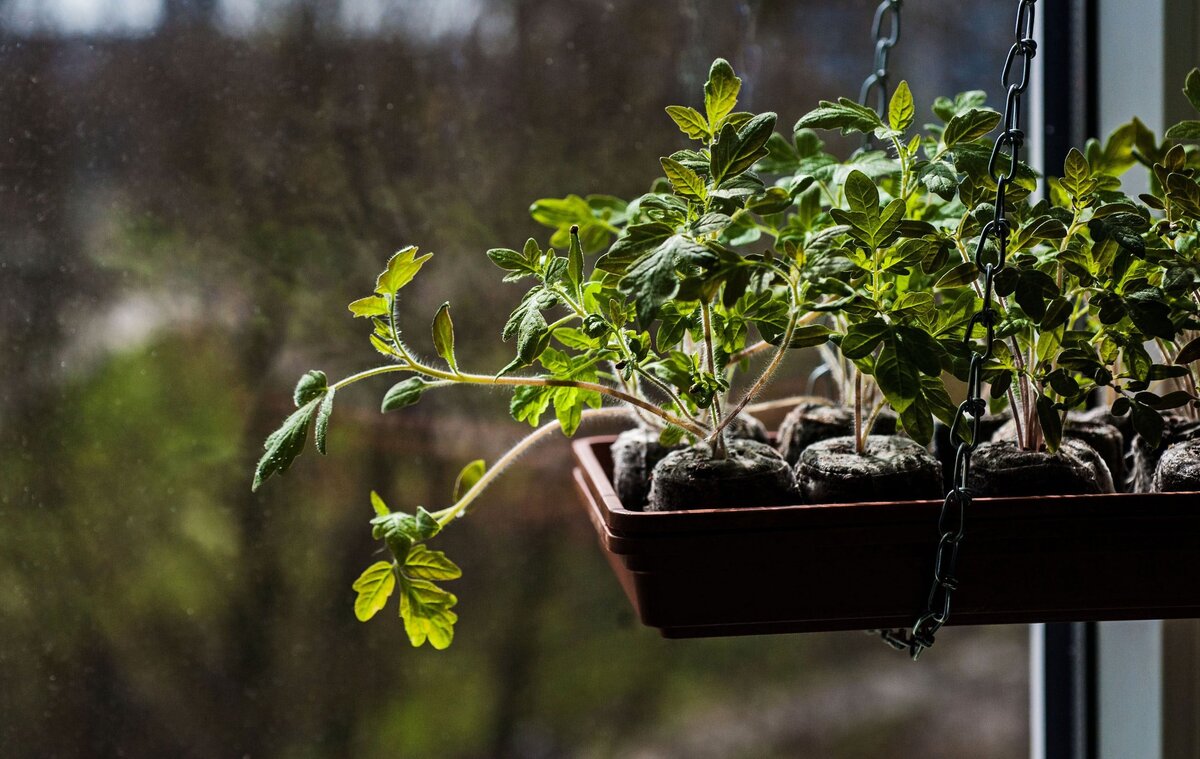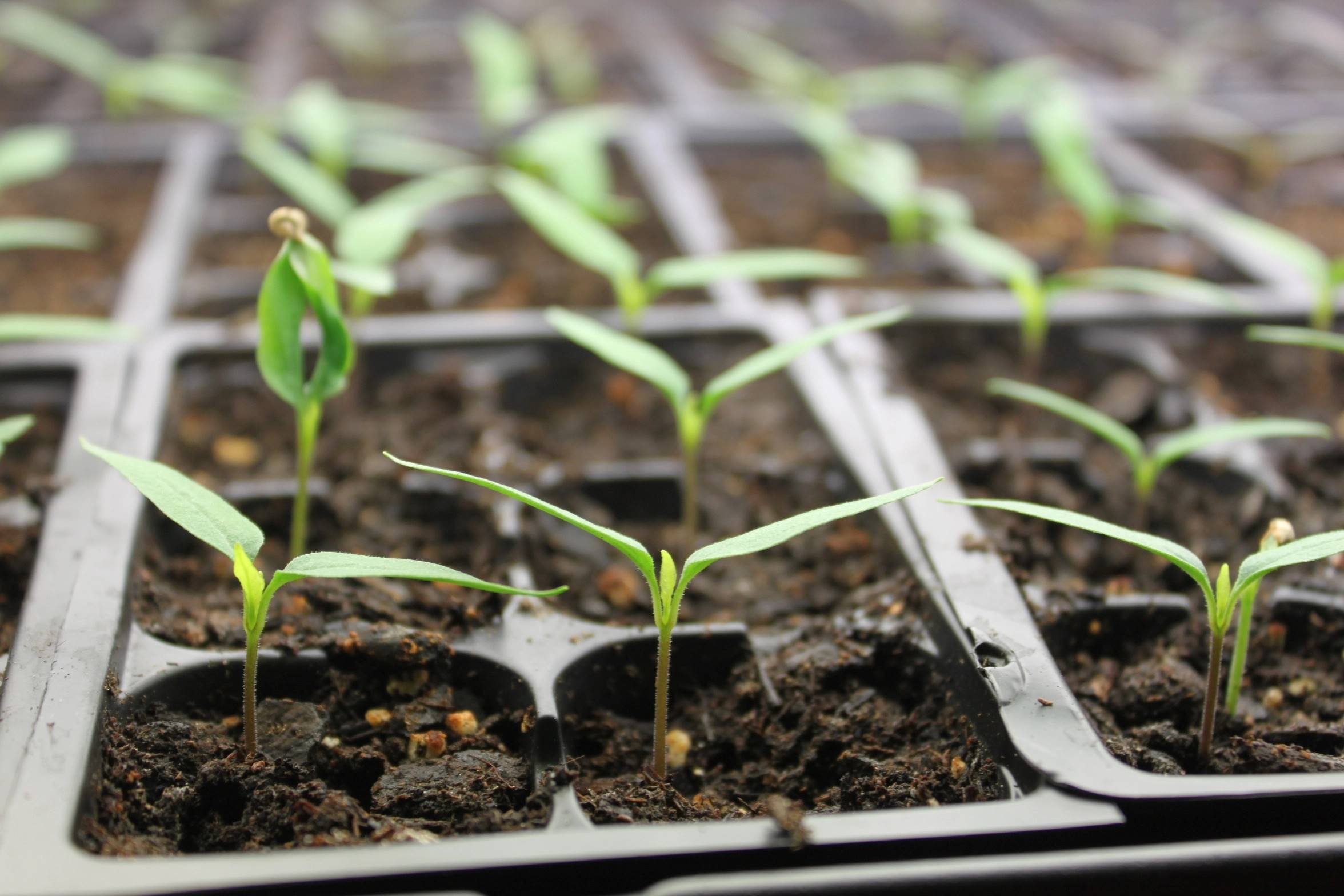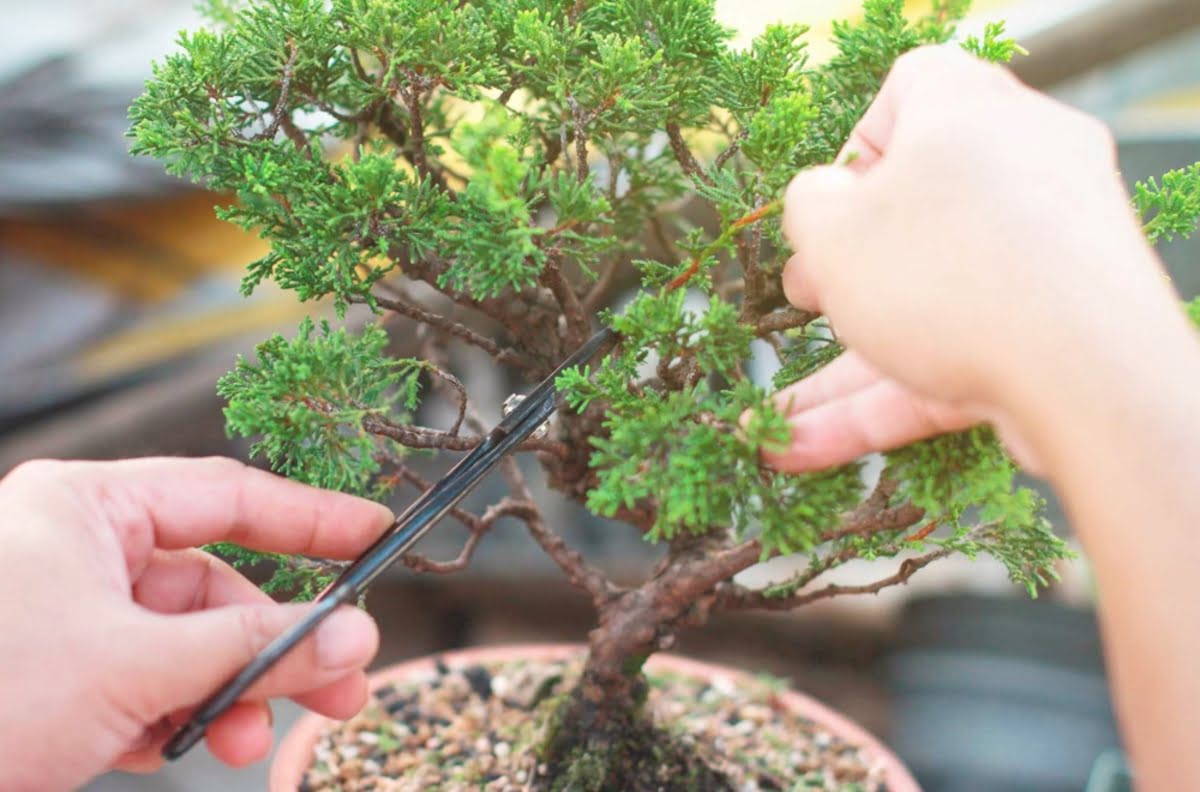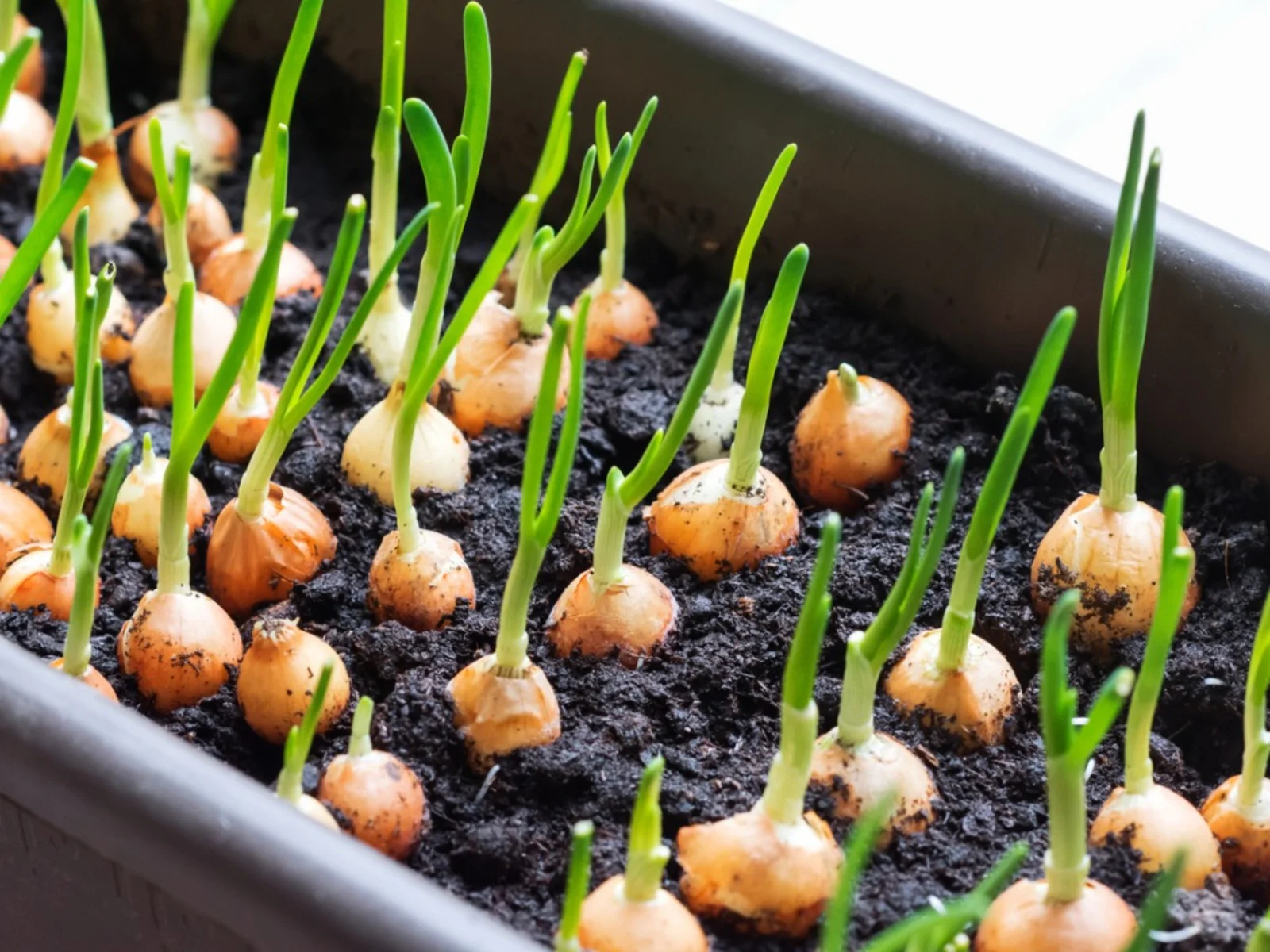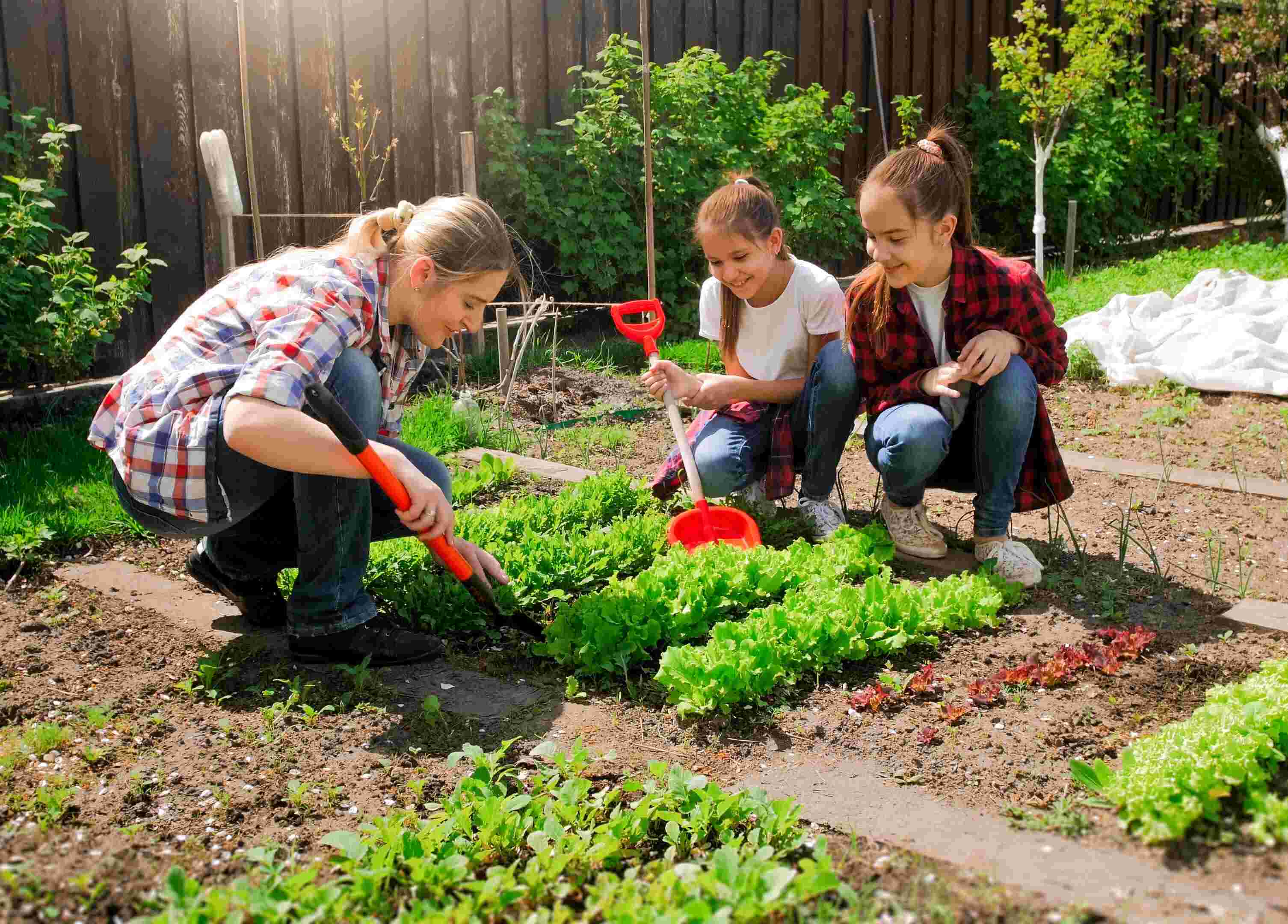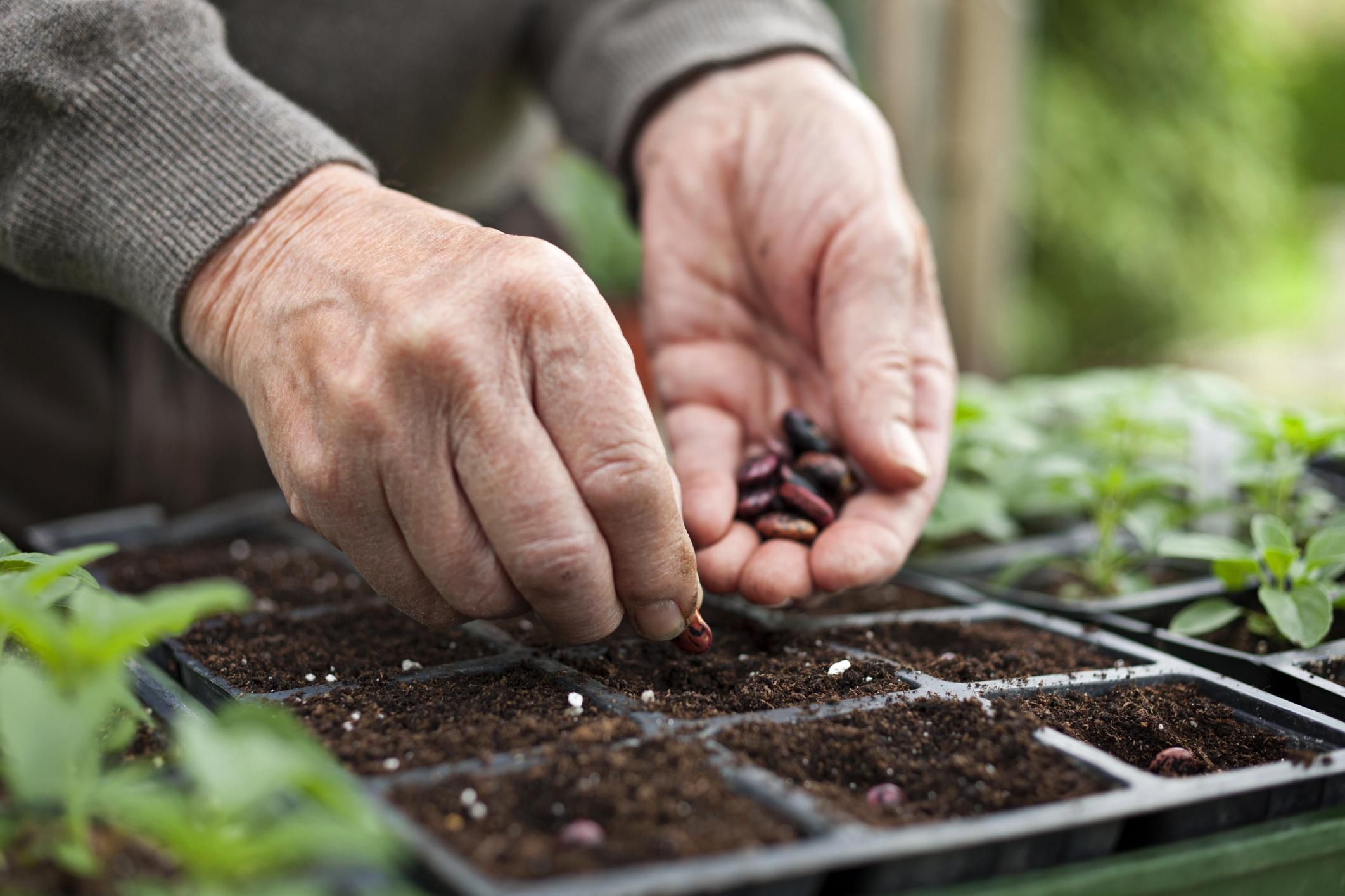Home>Types of Gardening>Edible Gardening>When To Start Feeding Seedlings In Coco


Edible Gardening
When To Start Feeding Seedlings In Coco
Published: January 1, 2024
Learn when to start feeding seedlings in coco for your edible gardening needs. Discover the best timing and methods for optimal growth.
(Many of the links in this article redirect to a specific reviewed product. Your purchase of these products through affiliate links helps to generate commission for Chicagolandgardening.com, at no extra cost. Learn more)
Table of Contents
Introduction
Introduction
Starting a garden from seeds is an exciting endeavor, but it requires careful attention to ensure the healthy growth of seedlings. When cultivating seedlings in coco coir, it's essential to understand their nutrient requirements and the signs that indicate they need feeding. This article will provide valuable insights into the optimal timing for feeding seedlings in coco coir, empowering you to support their growth effectively.
Coco coir, derived from the husks of coconuts, has gained popularity as a growing medium due to its excellent water retention and aeration properties. When used for seed starting, coco coir provides a favorable environment for seeds to germinate and seedlings to establish their roots. However, unlike soil, coco coir does not contain inherent nutrients, necessitating the provision of essential elements for the seedlings' development.
In this article, we will delve into the nutrient requirements of seedlings, the signs that indicate they require feeding, and the best practices for feeding seedlings in coco coir. By understanding these key aspects, you will be well-equipped to nurture robust and healthy seedlings, setting the stage for a thriving garden.
Let's embark on this enlightening journey to discover the optimal timing for feeding seedlings in coco coir, unlocking the secrets to fostering their growth and vitality.
Understanding Coco Coir
Coco coir, also known as coconut coir or coconut fiber, is a natural fiber extracted from the husk of coconuts. It is a popular choice for horticultural applications due to its excellent water retention and aeration properties, making it an ideal medium for seed starting and plant growth. Unlike peat moss, which is derived from decomposed plant material, coco coir is a renewable resource, making it an environmentally friendly option for gardening.
One of the key advantages of using coco coir for seed starting is its ability to retain moisture while still providing ample oxygen to the roots of the seedlings. This balance is crucial for promoting healthy root development and preventing waterlogged conditions that can lead to root rot. Additionally, coco coir is naturally resistant to mold and bacterial growth, creating a clean and hygienic environment for seedlings to thrive.
When using coco coir for seed starting, it’s important to note that it does not contain significant levels of nutrients. While this allows for greater control over the nutrient content provided to the seedlings, it also means that additional fertilization is necessary to support their growth. Understanding the unique properties of coco coir and its nutrient-holding capacity is essential for effectively nourishing seedlings and ensuring their vitality.
As you embark on your journey of cultivating seedlings in coco coir, embracing the inherent benefits of this natural growing medium will set the stage for successful seed starting. By harnessing the water retention, aeration, and cleanliness offered by coco coir, you can create an optimal environment for seedlings to germinate and flourish.
Nutrient Requirements of Seedlings
Seedlings have specific nutrient requirements during their early stages of growth, essential for establishing strong roots and developing healthy foliage. The primary nutrients needed by seedlings are nitrogen (N), phosphorus (P), and potassium (K), often referred to as NPK. These macronutrients play critical roles in supporting various aspects of plant growth and development.
Nitrogen is vital for promoting lush, green foliage and facilitating overall plant growth. It is a key component of chlorophyll, the pigment responsible for photosynthesis, and is essential for the synthesis of proteins and enzymes within the plant. Phosphorus plays a crucial role in root development, flowering, and fruiting, making it particularly important during the early stages of a plant’s life. Potassium contributes to overall plant health, enhancing disease resistance, regulating water uptake, and promoting strong stems.
In addition to these primary macronutrients, seedlings also require secondary nutrients such as calcium, magnesium, and sulfur, as well as micronutrients including iron, zinc, manganese, and others. While seedlings’ nutrient requirements are relatively high compared to mature plants, they are also more sensitive to nutrient imbalances and deficiencies. Providing a balanced and comprehensive nutrient solution is essential for supporting the vigorous growth of seedlings.
When cultivating seedlings in coco coir, it’s important to recognize that the growing medium does not inherently supply these essential nutrients. As a result, growers must supplement the coco coir with a balanced fertilizer to ensure that the seedlings receive the necessary elements for robust growth. Understanding the specific nutrient requirements of seedlings and their critical roles in plant development is fundamental to providing optimal care and nourishment during the early stages of growth.
Signs that Seedlings Need Feeding
Observing the signs that indicate seedlings require feeding is crucial for addressing their nutritional needs in a timely manner. While seedlings initially rely on the nutrients stored in their seeds, these reserves become depleted as the plants grow, necessitating external supplementation. By recognizing the following indicators, growers can proactively provide the necessary nutrients to support the healthy development of seedlings in coco coir.
- Yellowing Leaves: One of the most common signs that seedlings require feeding is the yellowing of their lower leaves. This discoloration, known as chlorosis, often indicates a nitrogen deficiency, as nitrogen is essential for the synthesis of chlorophyll. Observing pale or yellow leaves can prompt growers to initiate fertilization to rectify the deficiency and restore the vibrant green color of the foliage.
- Stunted Growth: If seedlings exhibit slow or stunted growth compared to expectations, it may indicate a lack of essential nutrients. Inadequate nutrient availability can hinder the plants’ ability to develop robust stems and leaves, leading to a noticeable lag in their overall growth. Addressing this issue through timely feeding can promote accelerated growth and vigor in the seedlings.
- Wilting or Drooping: Seedlings experiencing nutrient deficiencies may display signs of wilting or drooping, despite adequate watering. This can occur when the plants are unable to uptake sufficient water due to imbalanced nutrient levels. Providing the necessary nutrients can help restore turgidity and vitality to the seedlings, enabling them to thrive once again.
- Purpling of Leaves: In some cases, seedlings may develop a purplish tint on their leaves, particularly on the underside. This discoloration is often indicative of a phosphorus deficiency, as phosphorus plays a crucial role in energy transfer within the plant. Recognizing this symptom can prompt growers to administer phosphorus-rich fertilizer to alleviate the deficiency and promote healthy foliage coloration.
By remaining attentive to these signs and promptly addressing any indications of nutrient deficiencies, growers can provide targeted nourishment to their seedlings, fostering robust growth and vitality. Understanding the visual cues that signal the need for feeding empowers growers to intervene effectively, ensuring the optimal development of seedlings in coco coir.
How to Feed Seedlings in Coco Coir
Feeding seedlings in coco coir involves providing them with a balanced and appropriate nutrient solution to support their growth and development. By following best practices for fertilization, growers can ensure that the seedlings receive the essential elements necessary for thriving in the coco coir medium.
When determining the feeding schedule for seedlings, it’s essential to consider their stage of growth and specific nutrient requirements. A general guideline is to initiate feeding once the seedlings have developed their first set of true leaves, signaling the depletion of nutrients stored in the seed. This typically occurs approximately two to three weeks after germination, depending on the plant species.
Here are essential steps to effectively feed seedlings in coco coir:
- Select a Balanced Fertilizer: Choose a fertilizer specifically formulated for seedlings or young plants, with a balanced NPK ratio to meet their nutritional needs. Look for a product that also contains essential micronutrients to ensure comprehensive nourishment.
- Dilute the Fertilizer: Follow the manufacturer’s instructions to dilute the fertilizer to the appropriate strength for seedlings. It’s crucial to avoid over-fertilization, as this can lead to nutrient imbalances and potential damage to the seedlings.
- Apply the Nutrient Solution: Water the coco coir with the diluted fertilizer solution, ensuring thorough and even distribution. Allow the excess solution to drain from the containers to prevent the buildup of salts and minimize the risk of root damage.
- Monitor and Adjust: Observe the seedlings’ response to the feeding regimen, paying attention to any changes in growth and foliage color. If necessary, adjust the feeding frequency or strength of the nutrient solution to accommodate the specific needs of the seedlings.
- Consider Additional Supplements: Depending on the development stage of the seedlings and their individual requirements, consider incorporating specialized supplements such as seaweed extract or beneficial microbes to enhance their overall health and resilience.
By adhering to these guidelines and maintaining attentiveness to the seedlings’ progress, growers can effectively nourish their seedlings in coco coir, fostering robust growth and vitality. Providing the appropriate nutrients at the right time is instrumental in establishing a strong foundation for the seedlings’ future development into thriving plants.
Conclusion
Cultivating seedlings in coco coir presents an opportunity to harness the benefits of this natural growing medium while ensuring the optimal nourishment of young plants. Understanding the unique properties of coco coir and the specific nutrient requirements of seedlings is essential for promoting their healthy development.
By recognizing the signs that indicate seedlings require feeding, growers can proactively address their nutritional needs, fostering robust growth and vitality. From yellowing leaves to stunted growth, these visual cues serve as valuable indicators, guiding the timely provision of essential nutrients to the seedlings.
Feeding seedlings in coco coir involves a strategic approach, incorporating a balanced fertilizer and diligent monitoring of the plants’ response. By adhering to best practices for fertilization and considering the individual needs of the seedlings, growers can create an optimal environment for their early growth stages.
As you embark on your journey of nurturing seedlings in coco coir, remember that attentive care and targeted nourishment are key to fostering their resilience and future success in the garden. By leveraging the inherent benefits of coco coir and providing the necessary nutrients, you can set the stage for a bountiful and thriving garden, enriched by the vibrant growth of your seedlings.
